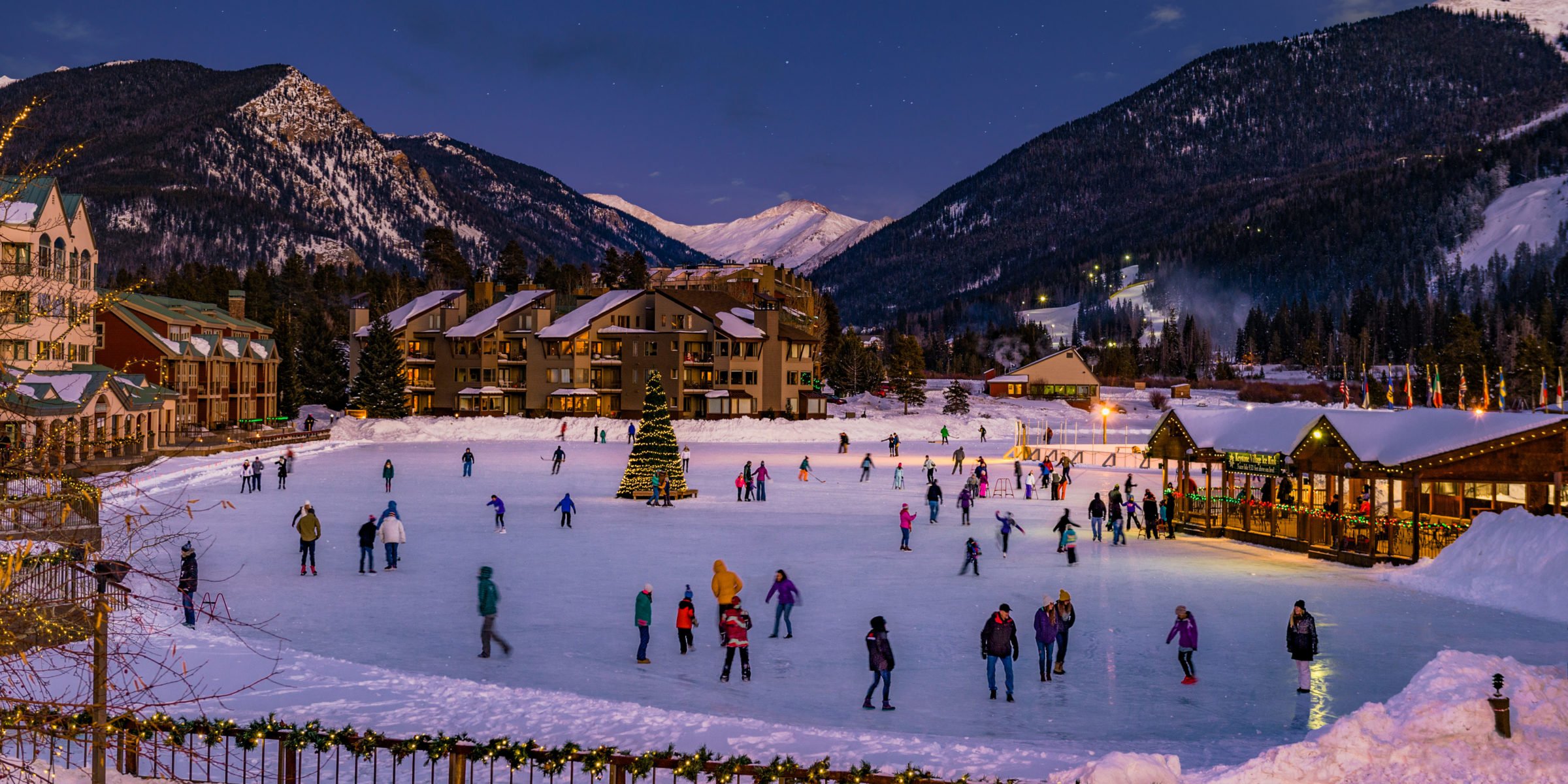
Snowshoeing offers a low-impact aerobic activity that is accessible to all ages and skill levels. It is a perfect winter sport for families or solo hikers who want to explore new areas in their area, stay in shape, or enjoy the quiet solitude of a snow-covered trail.
Ski Boots and Snowshoes
The first step when snowshoeing begins is choosing the right footwear. You will need winter boots that are durable, waterproof, and comfortable. You might also need adjustable poles depending on how you feel about the terrain and your level.
A variety of styles of snowshoes are available, ranging from simple and lightweight to heavy-duty and high-performance. If you're not sure which type of snowshoe is best for your needs, contact your local outdoor store and they can provide you with a demo to help you find the right model for you.

How to choose the right snowshoe for your gait
The shape of your feet is crucial when choosing a wintershoe. The shoe should be designed to fit your natural gait (walking) and should be very easy to use. It must also support your weight.
Also, consider your height as well as the length of your legs. To accommodate narrow feet or if you're shorter then the average person, you might need a longer shoeshoe.
Many snowshoes have binding straps that you place over your foot. The binding straps are attached by a small loop to the frame and secure your foot. Although they can be tricky to fit around your ankle, they should be very comfortable.
There are three main types of binding straps, which are used to fasten your foot to the snowshoe. Some models have a cup that you push into the snow. Others have two separate belts that attach to your shoe frame.

Bindings can be cumbersome to put on but are essential for safe and efficient transport of your foot. They're also a must-have for backcountry travel, as they help keep your foot on the frame and prevent you from tipping your snowshoe over as you go up or downhill.
Select the "Flex" option for your ski boots
If you plan on doing an adventurous trip that covers a lot of terrain, a ski boot with more flexibility may be a good choice. This will allow for better power transfer and control on difficult terrain.
A medium flex is recommended for beginners and recreational snowshoers. For intermediate snowshoers, a medium-flex is more appropriate. And for snowshoers who have more experience and are tackling more difficult terrain, a stiff flex works well.
FAQ
What is the first thing you should do upon arriving at your travel destination
You should always have an itinerary for when you arrive at a place. It lets you know what's expected and where to go.
Plan ahead to make sure you don't overlook anything.
For example, if you plan on visiting a city for more then one day, make sure you research which parks, museums, and landmarks are available.
You might also want to get a map and learn more about the history of the region.
Which documents should I bring with me on vacation?
You can always access important documents while you are on the road by keeping copies at home. If you plan on using an ATM machine, you may want to keep a copy of your passport, driver’s license and other official identification cards.
It is a good idea if you have a photocopy your passport so that it can be used in the event of a need.
Also, don't forget to include copies of your itinerary and reservations. These will help you to remember where you are and what you want to see.
Also, keep a duplicate of your flight ticket as well as details about your hotel reservation. You will be able to reach someone back home if there is any trouble.
Also, don't leave valuables unattended. Your valuables will be safe if you keep them in a money belt, or inside your luggage.
Ensure you check your baggage before leaving to avoid losing expensive items.
Remember: It's always safer to keep things simple than to try to over-plan everything.
So just relax and enjoy your journey!
What can I pack in my bag?
Two pairs of shoes is a good rule of thumb. One pair for walking around the city and another pair for going on vacation.
Make sure you have enough clothes to cover both. For plane travel, make sure to bring extra socks, underwear, shirt, and pants.
If you're planning on staying somewhere longer, you might want to think about bringing along a few changes of clothing. You won't feel awkward when you shop for new clothes.
If you're taking a bus or train, you'll need to bring some comfortable shoes. For those who drive, it is a good idea to have spare tires.
You should also pack lots of toiletries including shampoo, toothpaste as well as moisturizer and deodorant.
Last but not the least, you will need a flashlight as well as insect repellent, sunscreens, sunglasses, a hat, first aid kits, and sunblock.
You can put all of these items into one bag, rather than trying to stuff them in several bags. You'll save both time and space.
Finally, remember to bring a small towel or washcloth. You'll be able to use them when you take a shower after a long day.
What is the best price for airline tickets?
You might want to look at airlines such as Jetstar, Virgin Australia and Tigerair for the best airfares.
If you search online, you will see that some of these airlines give away cheap flight tickets as a promotion.
How do you travel light?
There are many options when it comes to packing for a trip. These are some suggestions to help you pick the right items to take on your trip.
-
Bring only what you really need.
-
You should only pack what you actually wear.
-
Do not buy too many.
-
Check your suitcase for space.
-
You should always double-check that everything is packed.
-
Make use of the free storage facilities
-
Use reusable water containers instead of buying bottled water.
-
Carry a backpack instead of using a suitcase.
-
Walk or cycle whenever possible instead of using public transport.
-
You can choose the right size bag.
-
Be careful not to carry large items.
-
You should be prepared for every eventuality
-
Don't leave anything behind
Which countries are known for their best food?
Food varies from country to country. It is difficult to know which countries are best at cooking.
We can however tell you which countries offer the best food!
According to TripAdvisor users:
-
Italy - Italy has been voted the number 1 destination by TripAdvisor users thanks to its fantastic food.
-
France - France was second due to its rich culture.
-
Spain - Spain came third because of its great weather and beautiful beaches.
Statistics
- Case in point: the private island of Ilha Caldeira, less than seven miles off the coast as part of the Primeiras and Segundas Archipelago, is located within the marine-protected area with 20 percent of the country's intact living coral. (travelandleisure.com)
- You can use compression sacs or cubes to reduce the volume of your clothes by up to 80%—this is especially convenient for bulky items such as sweaters and jackets. (eaglecreek.com)
- Alcoholic beverages with more than 24% but not more than 70% alcohol are limited in checked bags to 5 liters (1.3 gallons) per passenger and must be in unopened retail packaging. (tsa.gov)
- Pack sweaters, jackets, and underwear in reusable compression bags creating up to 75% more space in your luggage. (wikihow.com)
- They're also likely to offer babysitting services, in case you'd like to have dinner one night after 7 p.m. (travelandleisure.com)
External Links
How To
How to plan your next vacation
Planning a trip includes many things such as booking flights, hotels and car rentals. It also includes important considerations such as budget, schedule, destination, weather forecast, etc.
These points are essential to keep in mind when you plan your next vacation.
We've created a step by step guide to help you plan your next holiday. Based on customer feedback and our own experience, this guide was created. We hope that by following this guide, you can plan your next vacation without any hassle.
Steps:
-
Plan your Budget - This is the most important step to take when planning for a trip. You must know how much money you want to spend on your trip before you start thinking about where to go and what to do. You might have to cancel your plans if you don't have enough money.
-
Book Your Flights. After you have decided on your budget, book your tickets. Book the best available flight deal at the lowest possible price. In addition, make sure you check whether there are any special offers for certain seasons. These deals may save you money.
-
Your Destination - Now that you've booked your plane ticket, it's time to choose where you want. When choosing your destination, many factors are important. These include location (where you are going), climate (what time of year), culture (how friendly the people) and cost (how much it is).
-
Find Accommodations. After selecting your destination, the next step is to search for accommodations. There are many accommodation options available, from inexpensive hostels to luxury suites. Choosing the right type of accommodation depends on your needs and preferences. A hotel is not the best choice if you want to be close to the city centre. However, homestays may be more suitable for you if your preference is quieter and away from crowds.
-
Select Activities & Attractions. After you have chosen your accommodation, now it's time to choose the activities and attractions that will be included in your itinerary. Depending on your length of stay, you may choose to add or remove activities.
-
Determine Schedule - Now that you've selected the activities and attractions you'd like to include, it's time to determine your itinerary. You should follow a set schedule to get the most out of your trip. You can still enjoy your trip if you are able to travel at your own pace.
-
Create Itinerary - Creating an itinerary includes all the information about your trip. These information can include flights, accommodations, activities and restaurants. You will need to record them all and make a list.
-
Research Online - Before leaving for your trip, research online so you won't miss anything. You can read reviews and testimonials about other destinations to get their opinions. This will enable you to plan accordingly.
-
Avoid Overpacking - Too many clothes can make packing a nightmare. Do not bring more than three sets of clothes. Consider bringing clothing that's appropriate for the region.
-
Always be prepared Be prepared before you set off on your trip. It's not a good idea to spend time looking for documents while you are still on the move.